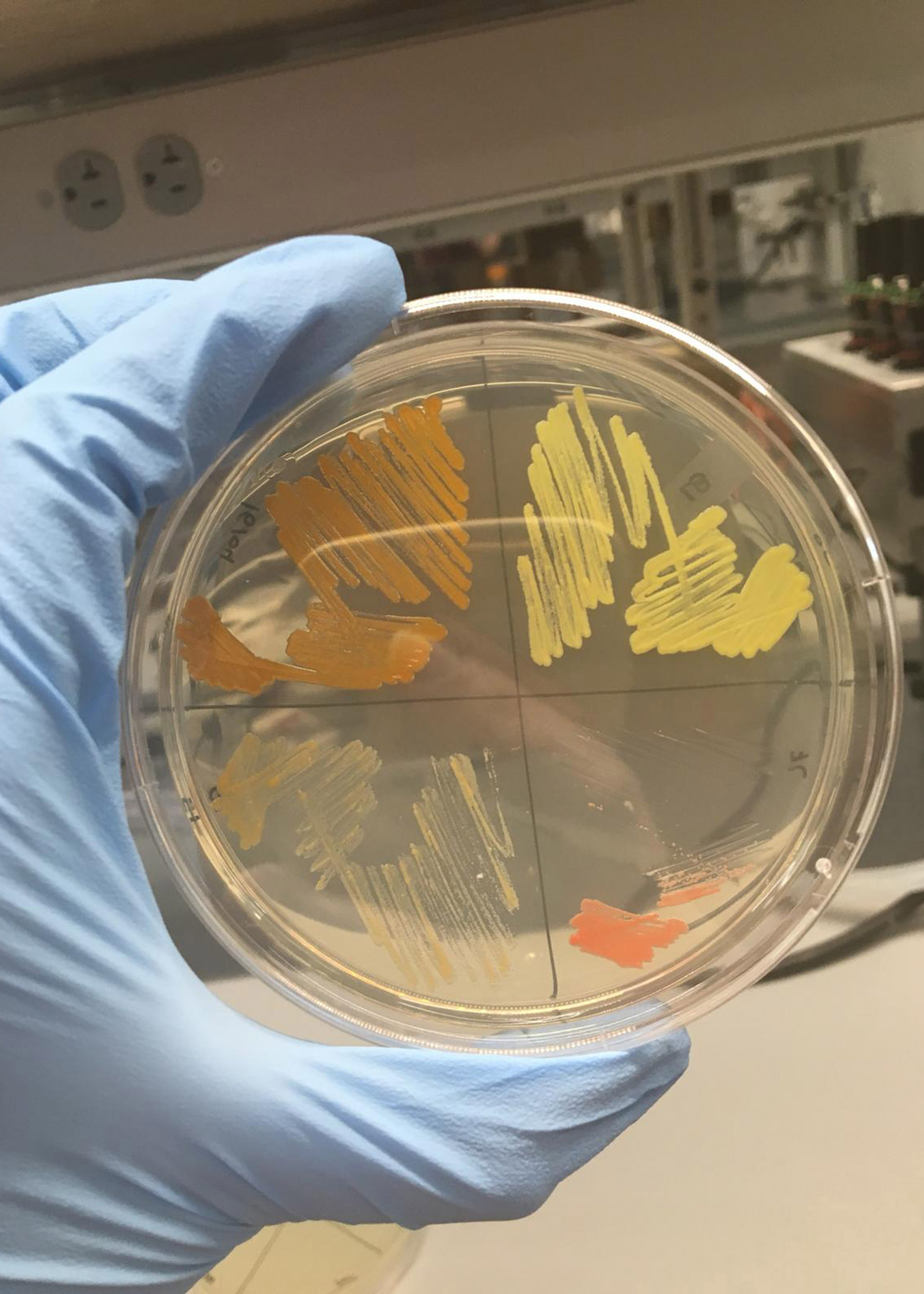Researchers have discovered new life — a never-before-seen bacterium — in a novel environment, one created by humans and spreading rapidly around the globe, at Harvard University’s Arnold Arboretum.
The new species is marked by the presence of colorful carotenoid pigments and an affinity for solar radiation, high temperatures, limited nutrients, and desiccation. That combination may be tough to find in lush New England, but is common on solar panels like those at the Arboretum’s Hunnewell Building, where it was discovered.
Arboretum Director William “Ned” Friedman said the find is a reminder that, even as humans dominate nature to an unprecedented extent, natural processes still continue in seemingly unnatural environments, like the solar panels that provide about a third of the Arboretum’s power.
“Every time we throw up panels, every time we create new surfaces, not only are there things that can exploit them — like this new species — but you shouldn’t expect that evolution isn’t going to happen and create things that better exploit them over time,” Friedman said. “In urban ecosystems, one might even anticipate that there are accelerated aspects of evolution because you’re presenting nature with new challenges or opportunities.”

The bacterium, Sphingomonas solaris, was discovered by Kristie Tanner, a University of Valencia graduate student on a three-month stay in Boston, thanks to a grant from Harvard’s Real Colegio Complutense. Tanner was conducting Ph.D. research, which included sampling and characterizing microbial communities living on solar panels in an array of environments, such as the Arctic, Antarctic, Boston, and her native Spain.
The collecting trip lasted just an afternoon, Tanner said. She took samples from the Hunnewell Building’s solar array by washing the panels with sterile water and collecting the water in test tubes. Once at the lab of her host, Ahmad Khalil, a visiting scholar at Harvard’s Wyss Institute for Biologically Inspired Engineering and a Boston University biomedical engineering professor, she isolated 40 different bacteria species and noticed that one’s 16S gene — an identification marker — differed from anything known.
“It was a big surprise,” Tanner said. “I’ve been doing bioprospecting for five years, studying bacteria in these weird and wonderful environments, and I said, ‘This could be a new species.’”
Tanner, assisted by colleagues in Boston and Spain, set about characterizing the new species and writing the exhaustive description required to introduce it to the broader scientific community. The manuscript was published in January in the International Journal of Systematic and Evolutionary Microbiology. The manuscript preparation was nerve-wracking, Tanner said, because she had to be both thorough and fast — and keep an eye on scientific publications to ensure another group didn’t beat her to it.
“It’s been very exciting,” she said.
Tanner and Friedman said it is most likely that the new species was an unrecognized transplant from the nearby environment, perhaps nearby soil. It joins more than 120 species of the Sphingomonas genus, discovered in 1990. Some Sphingomonas species have potential applications in bioremediation of heavy metals and other environmental pollutants.
Michael Dosmann, the Arboretum’s keeper of living collections, said the find adds to the long list of species whose discovery is linked to the Arboretum’s work. Over its nearly 150-year history, Arboretum researchers have discovered numerous species as they’ve traveled in search of specimens to add to its 16,000 living plants and 1.5 million herbarium specimens.
Relatively few species have been discovered on the grounds of the Arboretum itself, but those discoveries are not unknown. In 2016, a postdoc at Harvard’s Farlow Herbarium discovered a new species of truffle fungus, Tuber arnoldianum, living symbiotically among tree roots, and in 2018, researchers there discovered that an evergreen hemlock — already part of the collection — was in fact a new species, Tsuga ulleungensis, native to an island off South Korea’s east coast.
The most recent find, Dosmann said, highlights how little we still know about biodiversity, even in places as well-trod and well-studied as Arnold Arboretum. Dosmann said that finding a new species used to mean taking a plane, then a boat, a train, a bus, and a horse to reach untouched wilderness, but as our understanding of the micro-environment grows, as humans continually alter the landscape, and as the climate affecting known ecosystems shifts, the idea of “novel ecosystems” — and the biodiversity it promotes — comes closer and closer to home.
“What we’ve written down is a moon-cast shadow to what exists,” Dosmann said. “It does make you wonder: What are we going to find tomorrow?”
If our reporting has informed or inspired you, please consider making a donation. Every contribution, no matter the size, empowers us to continue delivering accurate, engaging, and trustworthy science and medical news. Independent journalism requires time, effort, and resources—your support ensures we can keep uncovering the stories that matter most to you.
Join us in making knowledge accessible and impactful. Thank you for standing with us!


The implication, early in the article, that this is a newly evolved species specializing in a solar cell micro-environment, is unsupported. As stated later on, “Tanner and Friedman said it is most likely that the new species was an unrecognized transplant from the nearby environment.” would likely be Occam’s choice.